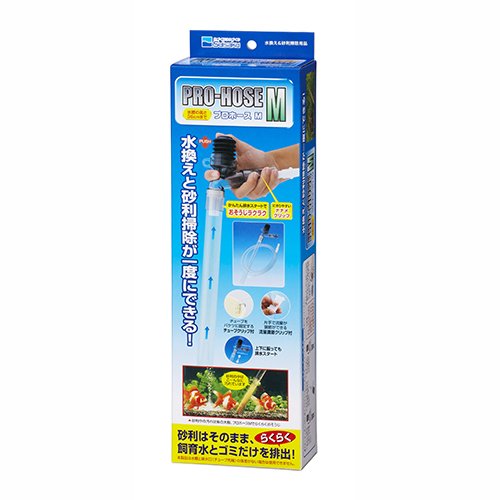rearing
Table of Contents
Before considering how and how often to do water changes, if you know why you are doing them, it will be easier to know how to do them, and you will be able to adapt your water changes to your own style. There are two main reasons for water changes.
1, Garbage discharge
2, Inhibition of pathogens
As for the first, "waste discharge",Basically, feeding goldfish does not always guarantee that they will eat all the food you give them.For example, their appetite will decrease when they are sick. Therefore, the food left uneaten by the goldfish will become garbage, and if left as it is, it will cause the water environment to deteriorate quickly. Therefore, when changing the water, we must take measures to remove as much waste as possible.
As for the second point, "suppression of pathogenic bacteria," bacteria will increase on their own in any environment. However,In an environment such as a river, where new water flows from upstream to downstream, the water quality is constantly changing, so the amount of bacteria can be controlled. However, in an environment such as an aquarium, where the water does not change much, it becomes more difficult to control the bacteria once they begin to grow.For this reason, water should be changed as often as possible.
Normal,A water change once a week is recommended.In particular, even if the water is not dirty, you should do a water change after a week because bacteria have begun to grow. However, it should be noted that in exceptional cases, water changes may need to be done earlier in the cycle.
One of the exceptions mentioned above is that if the amount of food is large, the frequency of water changes will be proportionately larger. Basically,The frequency of feeding is once a day, but for those who feed twice a day, the water will become dirty faster, so they will have to change the water two or three times a week.If you think you cannot do two water changes in a week, I recommend that you start today and reduce your feed to once a day.
| Amount of feed (per day) | Frequency of water changes (per week) |
| one inning | one inning |
| twice | twice |
| three times | three times |
| 1/2 times (once every 2 days) | Once every 10 days |
Japan has four distinct seasons, and the temperature and humidity vary accordingly.When the water temperature is high, the water quality deteriorates quickly because of the increased activity of bacteria, so the frequency of water changes must be quicker.Conversely, when the water temperature is low, bacterial activity is suppressed and water quality deteriorates slowly, so water changes can be performed more frequently and at a slower rate.
When doing a water change, we are confronted with the problem of not knowing how much water to change, all of it, or half of it.The amount of water to be changed is "one-third of the total water." The reason for changing only one-third is that some bacteria in the water do bad work, such as pathogens, but some do good work, defeating the bad bacteria.If you change all the water, all the bacteria currently living in the water will be gone but in a completely different environment. This will cause a great deal of stress for the goldfish. Too much stress can lower their immunity and make them more susceptible to disease. Even if you change the water in a way that you think is good for the goldfish, it may turn out to be not good at all.
The purpose of a water change is to remove debris, and how the debris is discharged. Garbage (food scraps and feces) sinks and settles to the bottom. The only way to remove that litter is to discharge the litter from the bottom in order to take it out, which is a surprisingly troublesome task.You have to drain a third of the water from the bottom and put in new water.Therefore, water changes can be done efficiently by using a tool like a dropper that can absorb debris from the bottom of the water.
There is one thing that must be kept in mind when doing a water change. That is to keep in mind the reason for water changes: waste discharge. How muchEven if you take the time to do a water change, if you can't get the waste out of the water, there's no point in doing it.It is. And, goldfish should have frequent water changes because the water gets dirty much faster than other ornamental fish such as tropical fish and killifish.
Here are some very reliable tools to have for water changes.

When draining the water from the bottom, if we can reliably identify where the debris is and suck it out, we can save time and make water changes more efficient.To achieve this, the "Suisaku Pro Hose Extra" is a very good product. If you are unable to purchase it right now, or if there is no store near you that sells it, as a substitute, the hose used to remove kerosene from polyethylene tanks in the winter will work similarly.